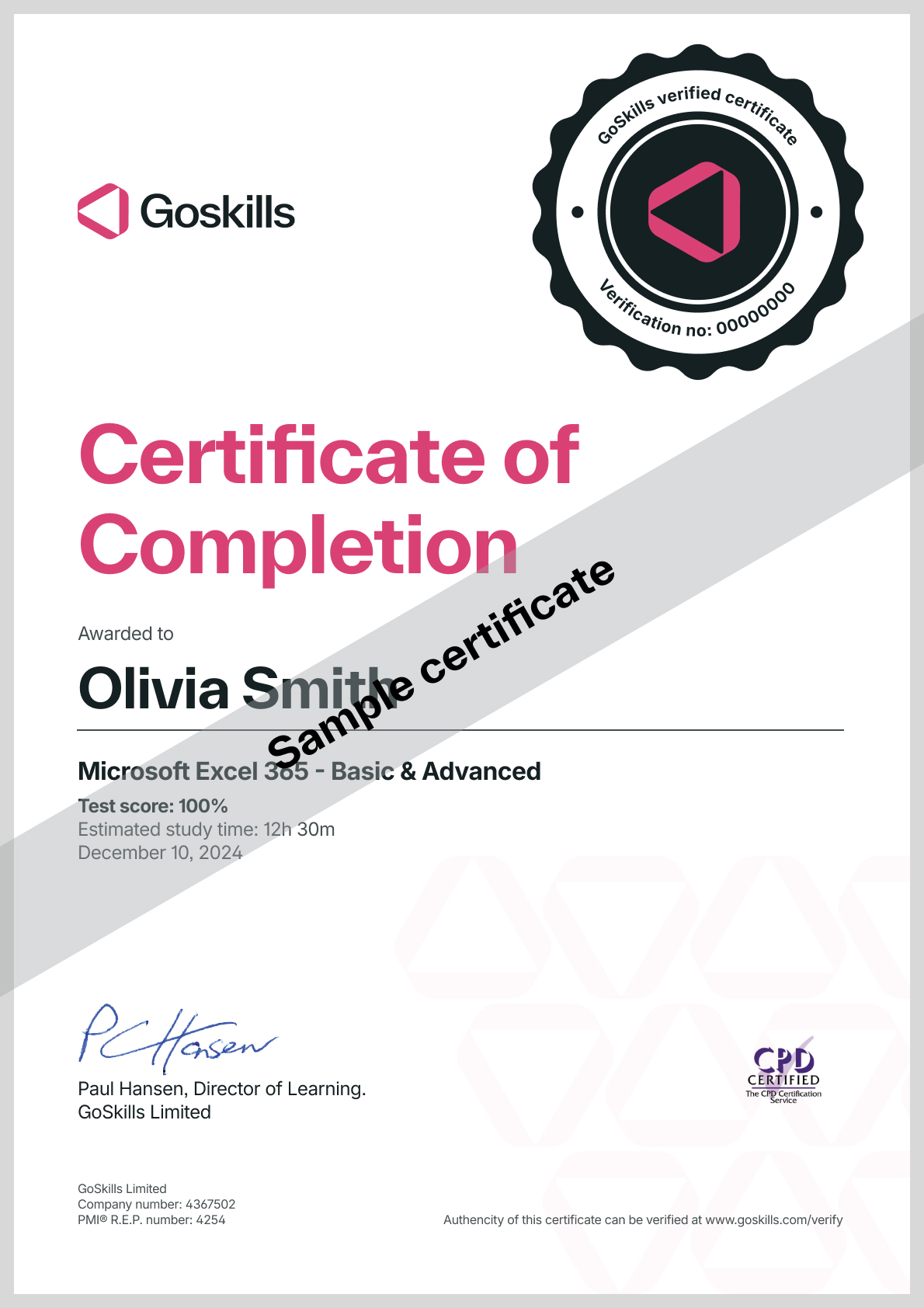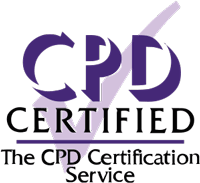Microsoft Access Course Online | Basic Access Training - GoSkills
Microsoft Access for Beginners
Skills you’ll gain
Microsoft Access Course for Beginners: Master the skills to manage your own data tables and reports
If you've ever felt overwhelmed by the mountains of data in your work, you're not alone. In order to effectively and efficiently manage a high volume of important information, enrolling in Microsoft Access training is essential.
In this Microsoft Access course for beginners, you'll learn:
- How to navigate and work within the Microsoft Access interface, including tables and datasheets.
- How to manage, view, import, and validate your own data sets.
- How to create forms, queries, expressions, reports, and so much more!
Through a series of interactive, bite-sized lessons, you'll quickly develop the confidence you need to work with your own data, enabling you to make smart decisions through efficient data management and reporting.
Start your journey to smarter data-driven decision-making today with our Microsoft Access course for beginners!
Syllabus
Download syllabus-
1
Introduction to Database Templates Explore the templates available in Access and create a contacts database using the template. 6m
-
2
Creating, Saving, Opening and Closing Databases Learn how to create a database, save it to a specific location, and how to open existing databases. 5m
-
3
The Access Interface, Views, and Backstage Understand the Access Interface including the different workspace elements, the ribbons, and the backstage area. 6m
-
4
Getting Help Get Help on demand when working in Access. 4m
-
5
Customizing the Quick Access Toolbar Learn how to work with the ribbons in Access and add frequently used commands to the Quick Access Toolbar. 6m
-
1
Creating a Table and Adding Fields In this lesson, we will learn about tables in Access, and then setup our first table and add fields. 7m
-
2
Indexing, Primary Keys and Adding Records Understand indexing and the concept of primary key fields to identify records. We will then start to build our database by adding our first records to the Trip table. 6m
-
3
Using the Lookup Wizard to Create a Drop-down List Control the information entered into a field by creating a drop-down list using the Lookup Wizard. 6m
-
4
Adding Numeric Fields and Setting Data Validation Rules Add three numeric fields to the table and set the properties for each including data validation rules. 6m
-
1
Importing Data from an Excel spreadsheet and a Text File Import additional data from an Excel file and a Text File into Access and append it to the bottom of the Ticket table. 6m
-
1
Working in Datasheet View Explore the options for designing in the datasheet view. 7m
-
2
Sorting and Filtering in Datasheet View Organize and refine records in a table using sorting and filtering in datasheet view. 4m
-
3
Entering and Modifying Data in Datasheet View Learn some useful tips for entering data into Datasheet view. 5m
-
1
Relationships Explained Understand how relationships work in Access and why they are fundemental to building a functional database. 2m
-
2
Creating a Link Table Start the process of creating a relationship between two tables by setting up a link table. 7m
-
3
Setting Up Relationships Create a third table to hold the company information and then create a link table to link the ticket table to the company table. 6m
-
4
Editing the Link Table Make changes to the link table and understand the types of error messages that can occur. 9m
-
1
Creating a Form - Form Wizard Creating a user form using the Form Wizard. 4m
-
2
Form Properties Adjust the properties of the form using the Property Sheet and Form Properties. 6m
-
3
Modifying a Form - Single Form vs Continuous View Make modifications to the way the form looks and behaves by switching it to Single form view. 4m
-
4
Forms in Layout View - Part 1 Make design changes to a form using Layout View. 4m
-
5
Forms in Layout View - Part 2 Make design changes to a form using Layout View. 5m
-
6
Forms in Design View - Part 1 Create a blank form, add fields, and make changes to the form in Design View. 5m
-
7
Forms in Design View - Part 2 Continue editing the form in Design View. 7m
-
1
Setting Up Subforms - Part 1 Create a new table, populate it with information, and link it to the ticket table in preparation for creating a subform. 7m
-
2
Setting Up Subforms - Part 2 Continue setting up the subform and protect it from editing. 6m
-
1
Creating a Query - Query Design Creating your first query to search through records in a database. 8m
-
2
Understanding Joins Learn how to use joins to create a query using information from more than one table. 4m
-
3
Creating a Query - Query Wizard Use the Query Wizard to build different types of query and perform aggregation. 4m
-
1
Calculations Using Expressions Use an expression to perform calculations on fields and display new information, such as an end date. 5m
-
1
Basic Reports Create a basic report using the Report Wizard and explore Print Preview. 6m
-
2
Report Design Explore the basics of modifying a reports design. 6m
-
1
Data Types: Yes/No Checkbox Add a Yes/No checkbox control to a form. 4m
-
2
Data Types: Attachments Add an attachment form control. 4m
-
1
Form Controls: Option Buttons Add option buttons to the form. 6m
-
2
Form Themes Switch between different themes and customize a theme. 6m
-
3
Navigation Form Limit users to just the forms they need by creating a navigation form. 7m
-
1
Exporting an Access Database Explore the different ways you can export tables, forms and reports. 3m
-
2
Database Properties and Encryption Modify database properties and encrypt the database with a password. 5m
-
3
Compact and Repair Repair and fix errors in a database. 3m
-
4
Printing and Database Documenter How to adjust Print Properties and Print database objects. 4m
-
1
Course Close Course Close 4m
Certificate
Certificate of Completion
Awarded upon successful completion of the course.

Instructor
Deborah Ashby
Deborah is a Microsoft MVP and TAP Accredited Microsoft Instructor and Content Creator specializing in the design and development of online training courses and video content.
Since the mid-1990s, she has been involved in the IT industry, starting her career on an IT Helpdesk for an airline at the tender age of 16. This sparked a passion for travel, and in 1997, she left the U.K. and moved to Melbourne, Australia, where she furthered her career as an Operations Analyst and programmer.

Deborah Ashby
Microsoft MVP and Trainer
Accreditations
Link to awardsHow GoSkills helped Chris
I got the promotion largely because of the skills I could develop, thanks to the GoSkills courses I took. I set aside at least 30 minutes daily to invest in myself and my professional growth. Seeing how much this has helped me become a more efficient employee is a big motivation.


